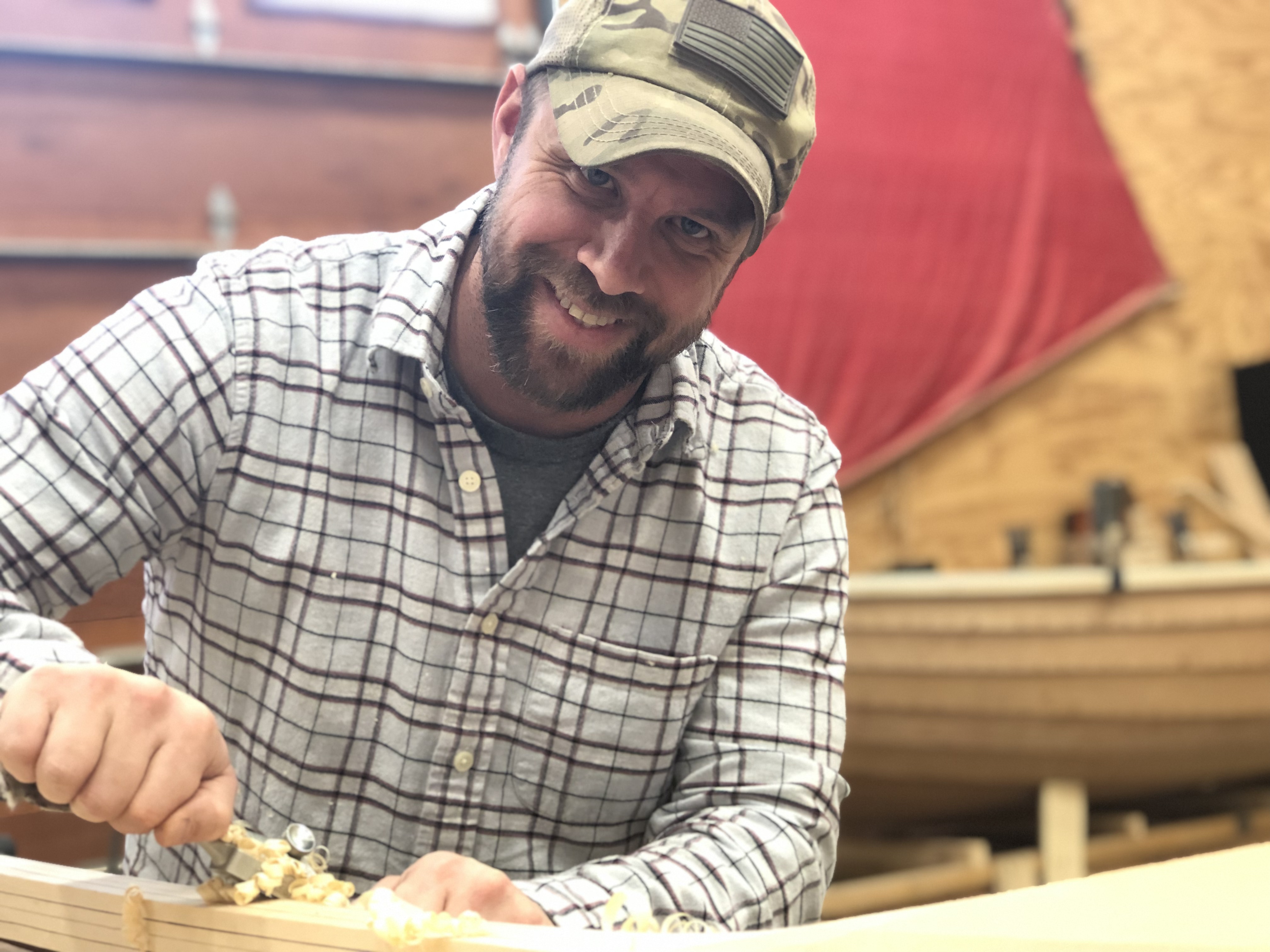
Up On Plane – Connections…
Connections…
By: Andy James, 2nd Year Instructor
When I started working here at the boat school, all I could think about, talk about, and dream about was boats. After 24 years in the Navy, I was free to follow my passion and I was in the perfect place to do just that.
Getting to know the staff was like adopting a new family. I fit right in. Bonnie Mikkelsen became my new grandmother. For her, it wasn’t so much the boats, but how they connected people and lives. I was too excited about the boats to put much thought into this, but one of the boats we ar building this year has such an interesting story that it has me thinking that maybe she has it all figured out. It’s a somewhate complicated and winding story that meanders from England to Southwest Michigan and the eastern U.P. over a span of 100 plus years.
In the early 1900’s, Thomas Truscott started a boat building company in St. Joseph, Michigan. He learned his trade in Islington, England, which Google tells me is a district in London. This was a time of change for boating as the gasoline engine was being perfected for the automotive industry right here in Michigan. Truscott capitalized on this transition and was soon building over 600 boats a year and shipping them all over the world. At one point, he was the biggest employer in St. Joe. I grew up near St. Joe and spent much of my summers on the beach there. I had never heard of Truscott or saw any sign that this community was once at the forefront of boat building. By then, fiberglass was king.
In 2008, I moved back to my southwest Michigan home. I soon found myself drawn into my father’s world where he spent a lot of time volunteering at the Michigan Maritime Museum in South Haven. South Haven is about twenty miles north of St. Joe. They had a tall ship and I wanted to be a crew member. They hired me but it wasn’t as a crew members. They had purchased a fiberglass hull that was taken off a 30-foot Truscott fantail launch. My job was to take this overgrown bathtub and turn it into a replica of the real thing. The museum planned to take people on this boat to tour the Black River as they had done 100 years ago. The hull was fiberglass but the rest would be wood and it would be electric powered. During that build a group called the Inland Water Route Historical Society (IWRHS) came down from Alanson, Michigan, to check it out. They had similar plans to show people the Inland Water Route that goes between Alanson and Cheboygan, Michigan. They liked what we were doing and watched closely as we went through Coast Guard certification.
A couple of years ago, IWRHS came to the boat school to ask if we could do the same for them. They purchased the same hull, but this one came with a small diesel for power. We started working on it last year and will finish it in 2017.
This last summer, Ralph Shoberg, who has a summer home just down the road from the boat school, wandered into the shop and said that he had heard we were working on a 30-foot Truscott launch. I said, “yep”, and he asked, “would you like to see a real one?” I followed him down to our dock where he had just parked his launch name Islington. He had restored it from what most people would have called a lost cause but when he told me her story, I understood why.
His Truscott had been commissioned by August “Papa” Stroh of Stroh Brewing. It was built in 1895 and is believed to be hull #1 of the 30-foot long series of Great Lakes Launches. “Papa” named it Islington in honor of Truscott’s home and craft. The Islington Hotel, here in Cedarville, was subsequently named after the boat and Islington Road followed suit. The hotel is gone but the boat still roams the waters of Les Cheneaux.
Soon, another Truscott launch will be working its way through the Inland Water Route.
I’m still a boat nut but I’m beginning to understand how interesting the story behind the boat, its history and the people whose lives it touched, can seem like a little more than coincidence.




